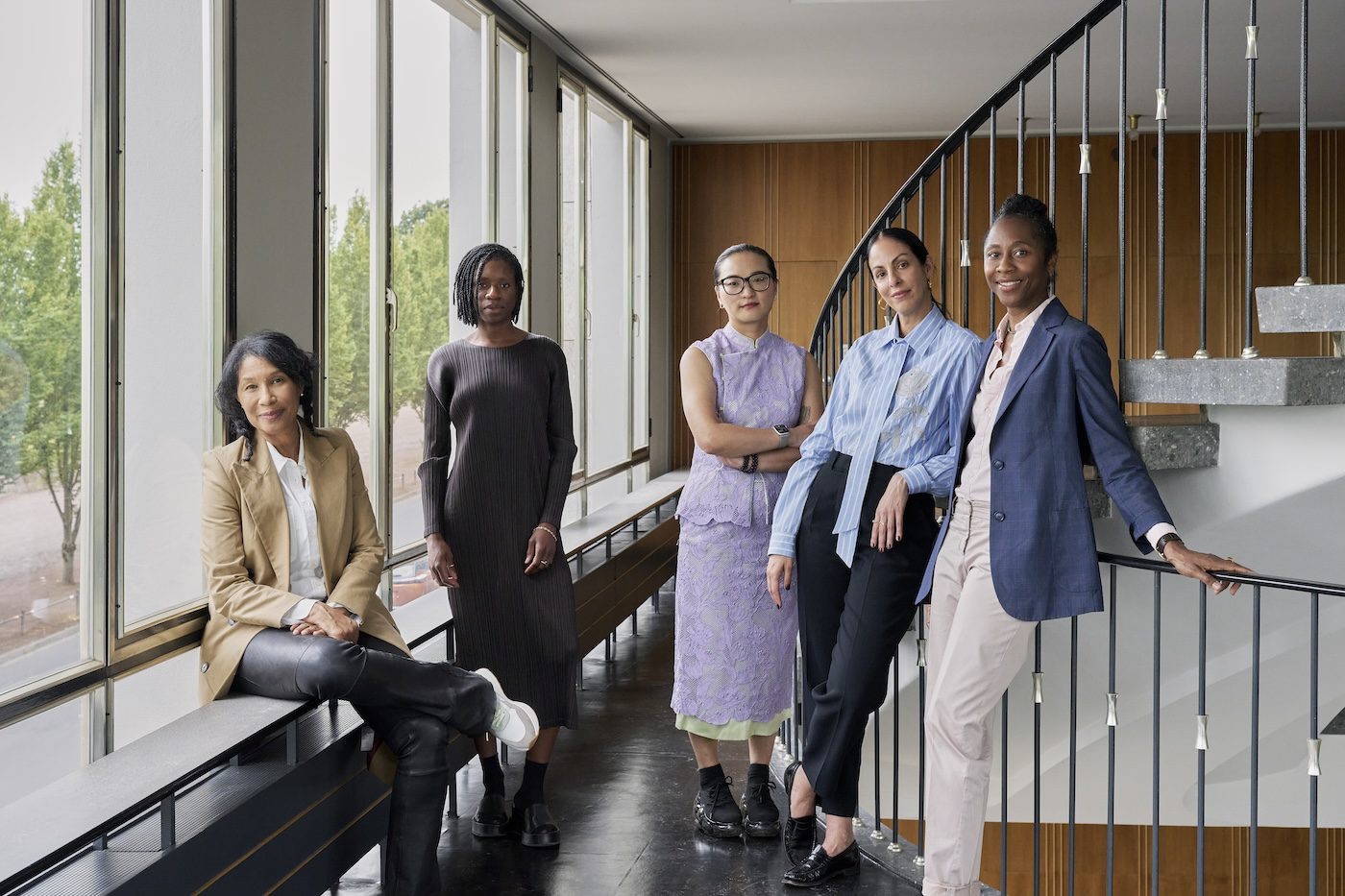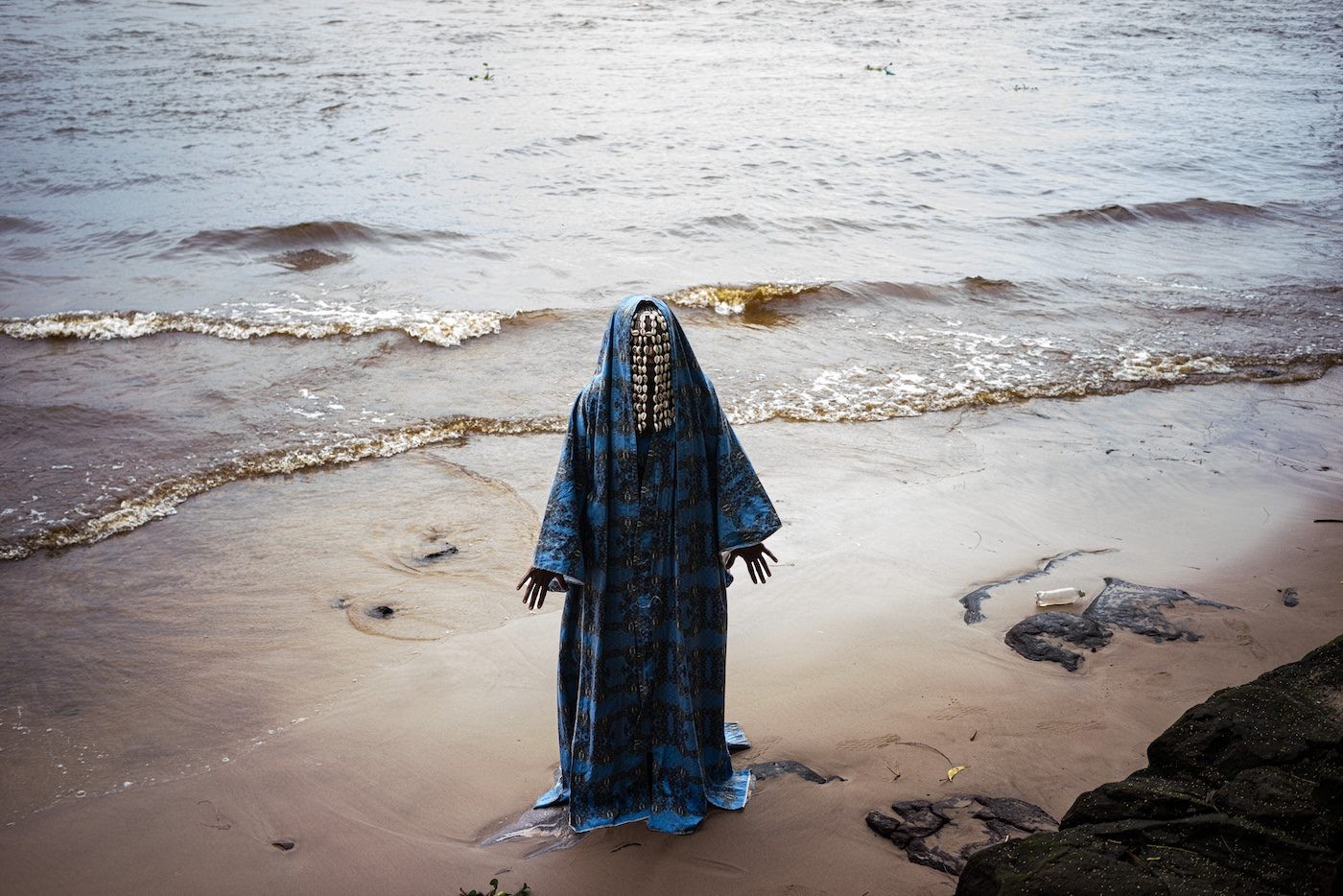In the Wake of Dak’Art Biennale 2024: A Momentum for Reflection

31 July 2024
Magazine C& Magazine
Words Black Pages
10 min read
Four curators from West-Africa reflect on Dakar’s cultural resilience and collective symbiosis following the Biennale’s unexpected postponement.
Fewer than three weeks before the scheduled opening of Dakar’s 15th Contemporary Art Biennale, election-related turbulence prompted the biennial’s general secretariat to postpone from May to November 7. This sudden change sparked widespread concern among Dakar’s artists, curators, and cultural institutions. What would be the fate of the artworks already produced? How would this effect the attendance of international art professionals? What financial, reputational, and artistic losses would be incurred?
Yet Dakar's artistic community also rallied to uphold the integrity of the biennial's OFF program. The postponement became an opportunity for the OFF to flourish independently, with a dense, transdisciplinary approach more inclusive of Africa and its diasporas than ever before. The city's diverse venues, from north to south and from east to west along the Atlantic, hosted a rich tapestry of exhibitions and public events.
Amid reflections on Dak’Art’s delay came a profound realization of the sector's vulnerabilities, particularly in funding and in the quest to balance artistic independence with international interdependence. In a pivotal moment for introspection, cultural actors reaffirmed their commitment to resilience and creativity. They organized themselves digitally very quickly, promoting exhibitions under the hashtag #theoffison. Artistic proposals appeared daily on the social media channels of Partcours, a meeting organized by arts stakeholders over the past ten years, and spread throughout the capital.
Looking ahead, we host a roundtable discussion led by the broadcasting platform Black Pages and featuring OFF-involved arts professionals Mohamed Amine Cissé, Jennifer Houdrouge, and Jareh Das, as well as Lagos-based artist-curator Aderemi Adegbite, who anchors the conversation in a broader political and Pan-African context.
Black Pages: Could you introduce yourselves and share how you have experienced the aftermath of the cancellation of the institutional part of Dakar Biennale 2024?
Mohamed Amine Cissé: I am an independent exhibition curator specializing in contemporary art and a contemporary art advisor. Like many professionals in the field, I was deeply affected by the news of the biennial's postponement. I had personally encouraged many international partners to participate, and our jobs in this sector are often seasonal. The period of the biennial is crucial for us. Learning that it would be postponed just two and a half weeks before its official date seemed unbelievable, completely bewildering... We overcame the initial shock by realizing that our exhibitions could still be developed and presented as planned. So we decided to proceed and encouraged everyone who was supposed to participate to come anyway. I am proud and happy to say that we succeeded.
Jennifer Houdrouge: The space I run, Selebe Yoon, has a program of exhibitions, events, and residencies open to international artists and exhibition curators throughout the year. We were disappointed to hear about the postponement of the biennial, but we did not consider postponing our own program. We do not operate solely around the biennial period – and that’s true for many cultural actors in Dakar. Our shared goal with artists has been to realize ambitious projects despite governmental circumstances.
Jareh Das: I'm a Nigerian-British curator who has been living and working between the UK and West Africa for the past decade. I met Aissa Dione, founder of Galerie Atiss, in 2018, and we spoke extensively about collaborating for some time. It seemed timely to work on our group exhibition Catch the Invisible to coincide with the now postponed Dak’Art. The exhibition brings together West African and Brazilian artists Ana Beatriz Almeida, Jelili Atiku, Elolo Bosoka, Serigne Mbaye Camara, Ibiye Camp, Tessi Kodjovi, Marica Kure, Alberto Pitta, A. Sika, and Yadichinma Ukoha-Kalu around the aesthetic qualities of Indigenous spiritual traditions and material cultures. Installed at Galerie Atiss in Dakar-Medina and Atelier Aïssa Dione Tissus in Sodida, it connects the materiality, spirituality, and symbolism of Brazil and West Africa. The title indicates forms of communication through gestures and meanings outside canonized or indoctrinated language and the systems of power and control from which it emerges. The show favors knowledge passed across generations that is ancestral or beyond the visible. With all the arrangements set, and in conversation with other arts professionals, artists, and organizations in Dakar, we decided to continue.
Aderemi Adegbite: I am an artist-curator based in Lagos, Nigeria. The unexpected cancellation of the Dak’Art Biennale took many in the art community by surprise, including artists, gallerists, and even the biennial team, as it was announced through the biennale's social media pages. The postponement of Dak’Art was not an isolated case, as other programs and projects, including those in the mining sector and city infrastructure, were also affected during this transition period. However, the outcry from the international art community, particularly from Europe, was notably vocal, revealing a lack of respect for the decisions made by the newly elected president.
BP: Considering the recent political instability, including the closure of cultural venues amid high-risk public gatherings and social media shutdowns, among other factors, I am intrigued by the potential for using the postponement of the Biennial as an opportunity for reflection within Dakar’s cultural sector. What key avenues of consideration could be explored to conduct an audit of the current functioning of the sector? How could we utilize this time of postponement as a period for comprehensive reflection?
MAC: We need to consider more than just the past six months. It would be advisable to postpone the biennial until next year. This would also have the advantage of avoiding the overlap between the Dakar and Venice Biennales, allowing more people to attend both. If we need to conduct a comprehensive assessment or convene cultural discussions in the country, six months seems very short. Senegal has had a genuine cultural policy since independence, but it has been stagnant at the same level for about twenty years. Today we talk about soft diplomacy, which requires a strong cultural policy, especially on the international stage. Canceling or postponing such a prestigious event as the Dakar Biennale is disastrous for the country's image.
JH: A biennial is a tremendous asset for a capital city like Dakar, especially when it has a historical foundation. Dak’Art has shone over the years, nationally and internationally. While a sector can indeed be built around a biennial event, in my opinion it must learn to develop and become autonomous beyond that event. It is up to each of us to consider the commitment we can make to this artistic scene in order to sustain and strengthen it with continuous cultural and artistic propositions. I believe in the power of independent initiatives, regardless of scale and size, and Dakar has been teeming with such initiatives for decades. An interesting question to ask ourselves could be: For whom and why are we doing what we do? Are we working and creating wonders solely for one week every two years?
AA: Redirecting funds from international projects towards supporting Dak’Art could have prevented the postponement of what is arguably the most significant art biennale in West Africa, if not the entire continent. It raises questions about the prioritization of "Western" projects over comprehensive Pan-African initiatives and calls for a reevaluation of resource allocation within the art community. This is a good time for the government of Senegal to reflect on repositioning the biennale within the framework of Afrocentrism and serve as a platform for Black people on the continent and in the diaspora is reaching out to organizations like the Centre for Black and African Art and Civilisation (CBAAC).
BP: How have the city and its people, for whom the biennial as a fixed part of the art calendar, evaluated the shift?
MAC: Dakar is thirsty for art, for culture. The enthusiasm in recent years, especially among young people (certainly aided by social media), is remarkable. Dak’Art is eagerly anticipated and scrutinized with an impatience that brings smiles! And that, that – is a victory!
JH: Contemporary art remains a niche sector in Senegal. I believe the postponement has been particularly felt by us cultural actors who were affected, as well as by individuals from abroad who had planned to visit. Meanwhile, the coffee seller at Ponty continues to serve his coffee, and the fishermen remain focused on their livelihoods.
JD: As a guest curator, someone from the outside looking in, it hasn’t been a shift as much as an unexpected event for all involved. Yet it revealed a resilient Dakar/Senegalese art scene that could respond to last-minute changes. Private and state actors have long come together for Dak'art, and this isn't going to change. Transparency is essential in times of uncertainty and crisis so that everyone can work together to resolve underlying issues, ensuring continuity and strengthening arts ecosystems. The turnout wasn't the same but it exceeded expectations, and it became apparent that Dakar's diverse and vibrant art ecosystem is supported locally and internationally – as is also evident in the turnout and staging of so many events, openings, talks, and exhibitions during this non-biennial season.
Mohamed Amine Cissé, formerly working in Douala, Cameroon at Galerie MAM and MOSS, is founder of the cultural agency KCISS. He had two exhibitions up and running during this OFF. One of them, Lingéer, consisted of photographic portraits by Khalifa Hussein (famous for covering the Dakar riots of 2021 and 2024) of eight visionary women. It was staged as a tribute to the 1820 Battle of Nder, when fugitive women set themselves on fire to safeguard the lineage from the grid of colonization.
Jennifer Houdrouge is the founder and director of Selebe Yoon art gallery and artist residency in Dakar. Last May, it hosted a dual exhibition and dialogue between artists represented by the gallery and those who had participated in its residency. Artists Hamedine Kane, Younes Baba-Ali, and Mbaye Diop discussed the intangible aspects of globalization them from the perspective of the Global South through their collective exhibition Export-Import. Alongside, the gallery's temporary extension featured Arébénor Basséne, Alioune Diouf, Melinda Fourn, Naomi Lulendo, and Sandra Seghir.
Jareh Das is a Newcastle-upon-Tyne-born, Lagos-raised (Uvwie) independent curator and scholar who regularly moves between West Africa and the UK. Being involved in Dak’Art 2024, Jareh Das co-curated the exhibition Catch the Invisible with Aissa Dione, which brings together new and existing works by artists from Brazil, the US, Europe, and West Africa comparing histories that have been passed down from one generation to the next and dealing with collective memory, ancestry, spirituality, reuse, and reinterpretation.
Aderemi Adegbite is an artist-curator, an interdisciplinary artist with an interest in social interventions. He is the founder of the Vernacular Art-space Laboratory Foundation, an artist initiative for artist-run projects. Recently, he created Tutuola Institute – The Yoruba Cultural Institute as both an artistic intervention and a legally recognised limited by guarantee NGO.
Black Pages is a critical broadcasting platform, handcrafting reads, writings, and radical spaces of praxis rooted in Dakar, Sénégal. Founding mother is Isabelle Kany Ndiaye.
Read more from

MAM São Paulo announces Diane Lima as Curator of the 39th Panorama of Brazilian Art

Naomi Beckwith Unveils Core Artistic Team for documenta 16
